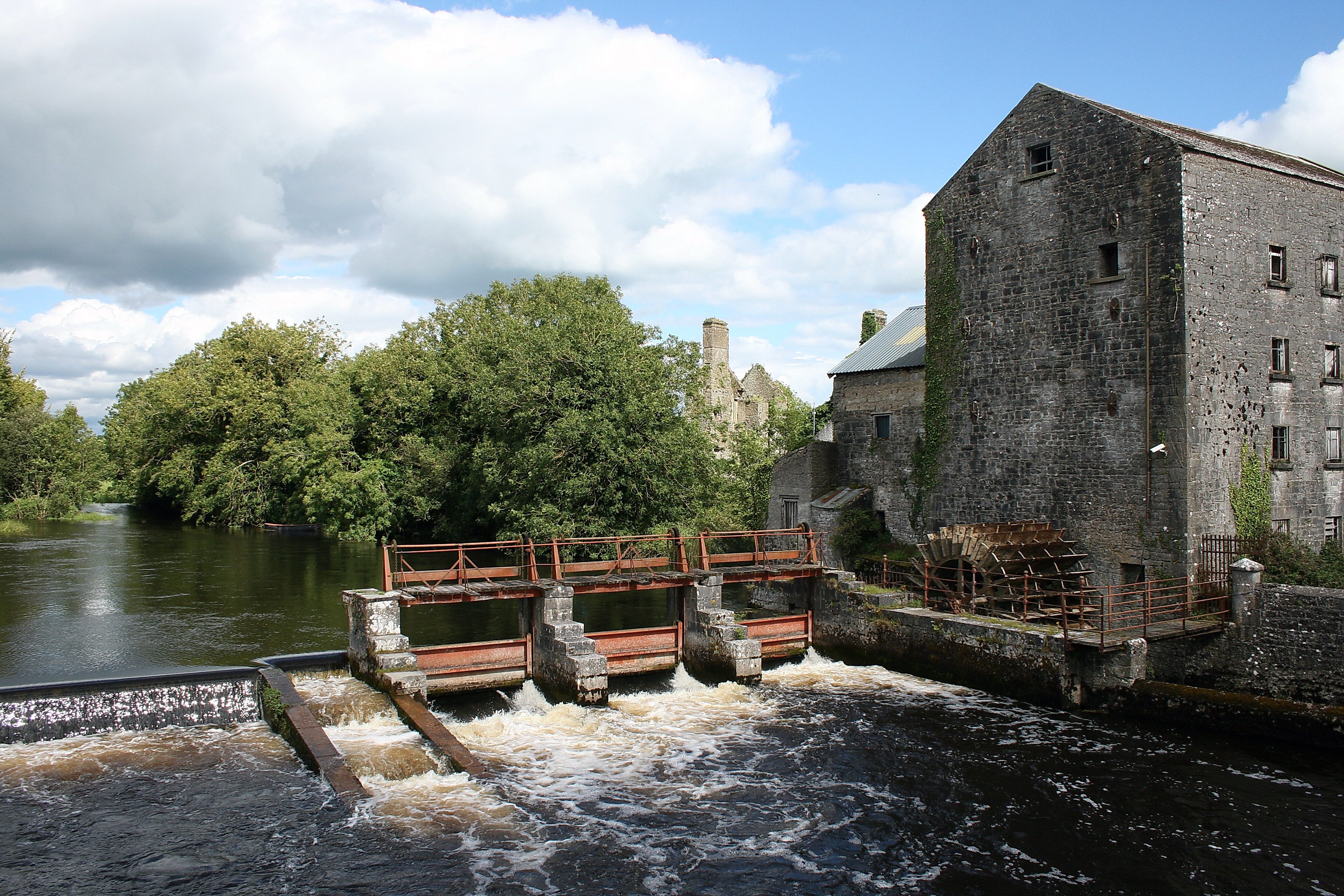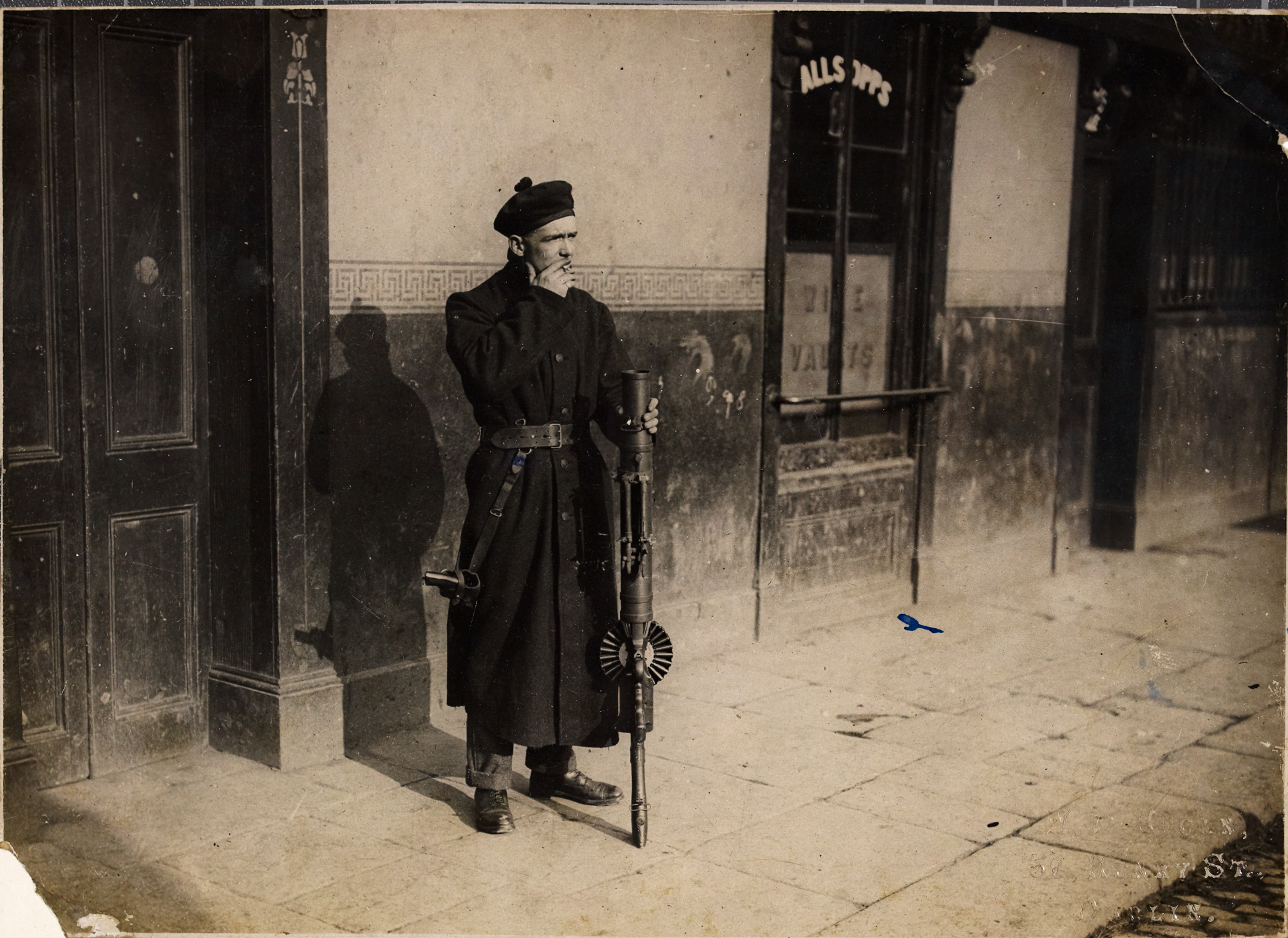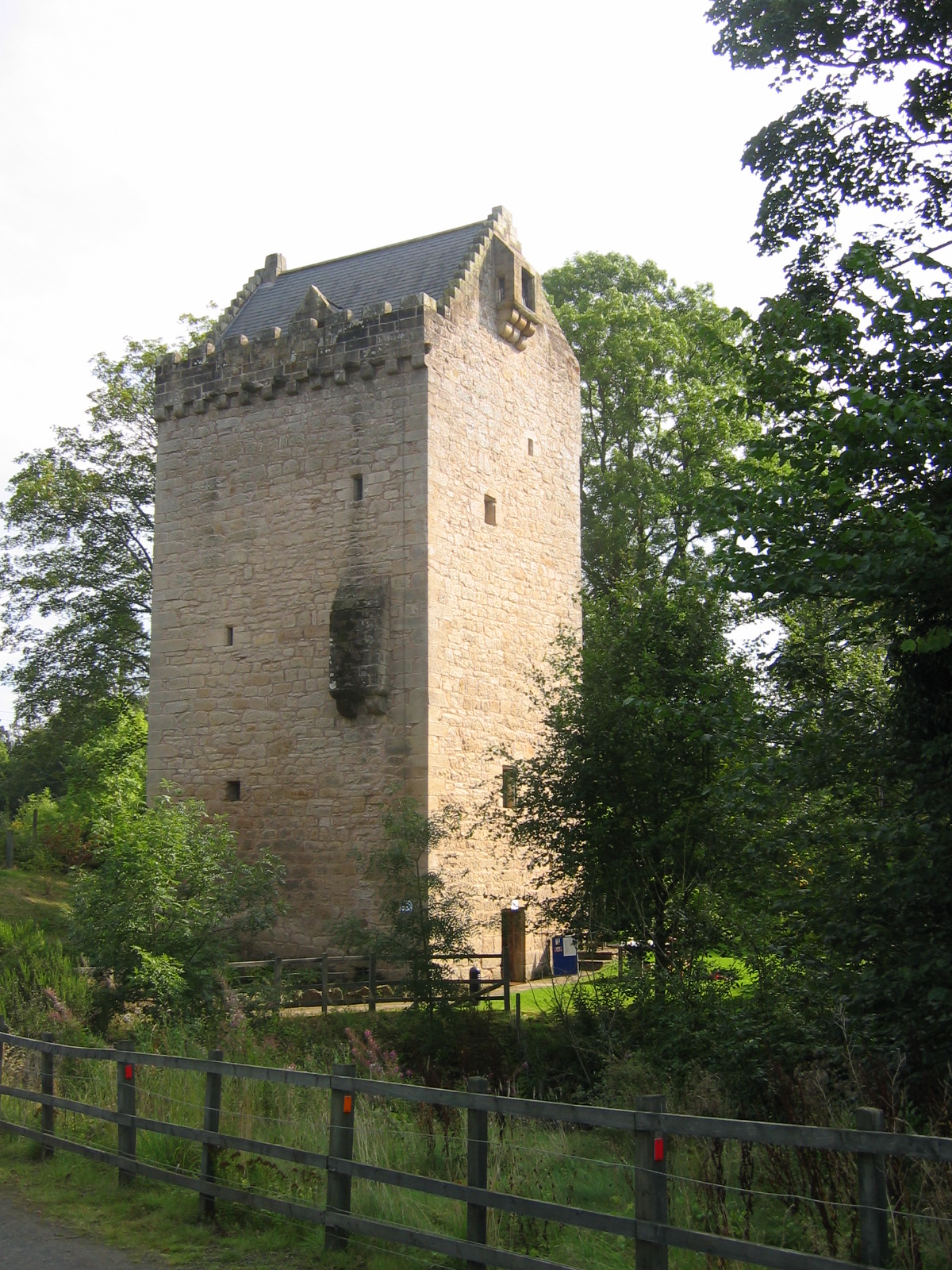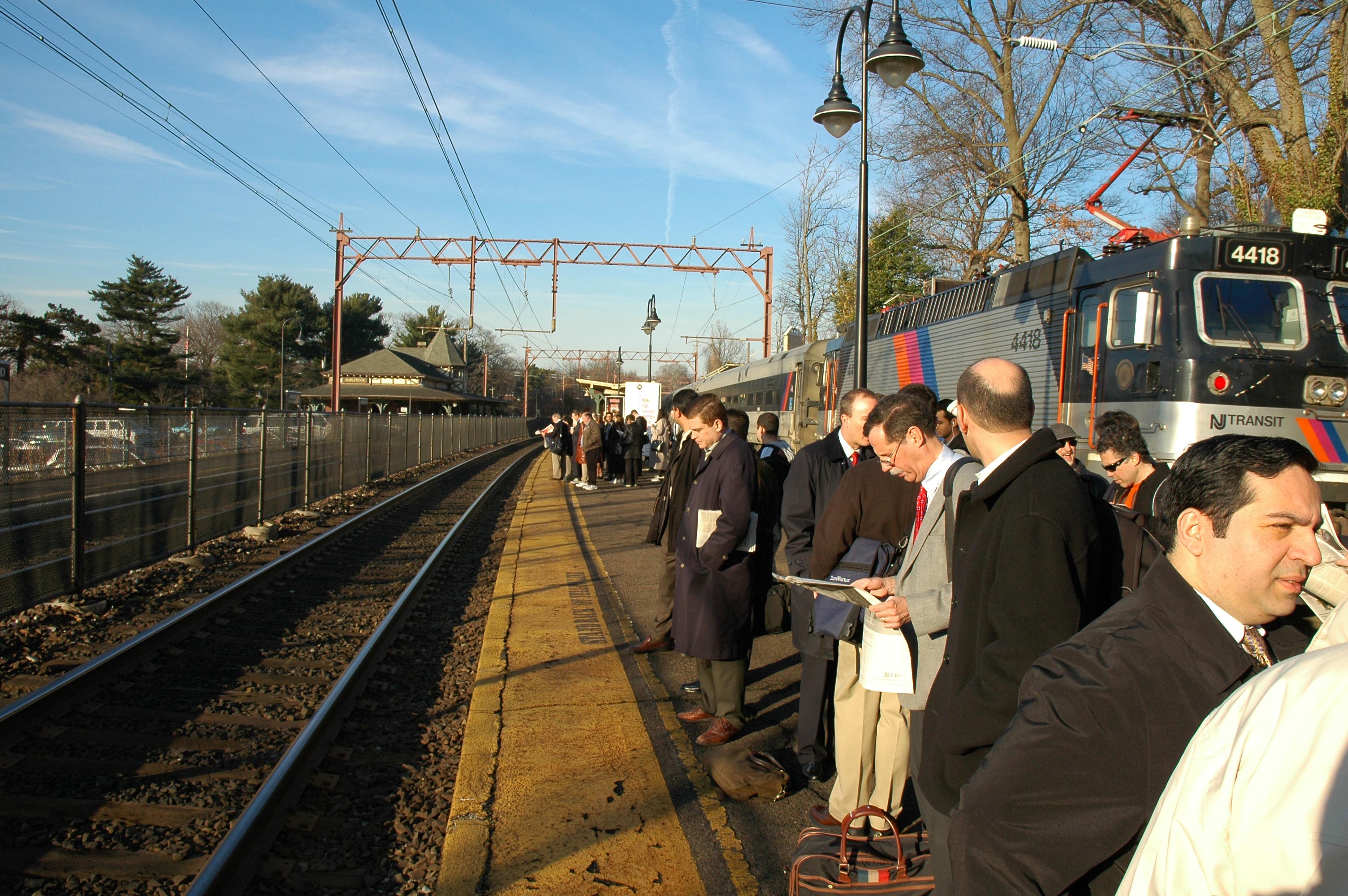|
Knockcroghery
Knockcroghery () is a village and townland in County Roscommon, Ireland. It is located on the N61 road (Ireland), N61 road between Athlone and Roscommon, Roscommon town, near Lough Ree on the River Shannon. The townland of Knockcroghery is in the civil parishes in Ireland, civil parish of Killinvoy and the barony (Ireland), historical barony of Athlone North. Knockcroghery developed as a largely linear settlement close to Galey Castle, a 14th-century tower house overlooking Galey Bay. By the 18th century, the village comprised a number of small houses, shops, blacksmith, mill, church and a village green, fair green. For a number of centuries, the village economy was focused on the making of Tobacco pipe#Clay, clay tobacco pipes, with eight kilns employing approximately 100 people by the 19th century. In the early 20th century, much of the village was burnt in a reprisal attack by the Black and Tans during the Irish War of Independence, and a number of buildings in the village ce ... [...More Info...] [...Related Items...] OR: [Wikipedia] [Google] [Baidu] |
Charles Coote, 1st Earl Of Mountrath
Charles Coote, 1st Earl of Mountrath ( 1609 – 18 December 1661) was an Anglo-Irish soldier and politician from County Roscommon. A strong advocate of the Protestant Ascendancy in Ireland, he fought for Parliament and the Commonwealth in the 1641 to 1652 Irish Confederate Wars. Coote also sat as an MP, and held various senior administrative posts, including Lord President of Connaught. Personal details Charles Coote was born 1609, eldest son of Sir Charles Coote (died 1642), and his wife Dorothea. One of five surviving children, he had three brothers, Chidley (1608–1668), Richard (1620–1683), and Thomas (1621–1671), and a sister, Letitia. Prior to 1630, Coote married Mary Rushe, with whom he had a son, another Charles (1630–1672). Mary died before 1645, when Coote married again, this time to Jane Hannay (died 1684). They had four children together, Richard, Chidley, Dorothy (1652–1677), Hannah, and Jane. Irish Confederate Wars Relatively little is known of Coote' ... [...More Info...] [...Related Items...] OR: [Wikipedia] [Google] [Baidu] |
N61 Road (Ireland)
The N61 road is a national secondary road in County Roscommon in Ireland, linking Athlone, Roscommon, Tulsk, and Boyle. It also connects the N6, N63, N60, N5, and N4 national primary and national secondary roads, as well as seven regional roads.S.I. No. 53/2012 — Roads Act 1993 (Classification of National Roads) Order 2012 ''Irish Statute Book''. 2012-02-28. The road is long map . The government legislation that defines the N61, the ''Roads Act 1 ... [...More Info...] [...Related Items...] OR: [Wikipedia] [Google] [Baidu] |
Athlone North
Athlone North (), also called North Athlone, is a barony in County Roscommon, Ireland. Baronies were mainly cadastral rather than administrative units. They acquired modest local taxation and spending functions in the 19th century before being superseded by the Local Government (Ireland) Act 1898. Etymology Athlone North is named after Athlone town; however, it does not actually contain that town, which is located in Brawny barony, County Westmeath. Geography Athlone North is located in the centre of County Roscommon, bounded by the River Shannon and Lough Ree to the east and the River Suck to the west. History It was originally a single barony with Athlone South; they were separated by 1868. Athlone barony was anciently ruled by the Ó Ceallaigh (O'Kellys), princes of Uí Maine. The Ó Fallúin (O'Fallons) were also a powerful family. It was created from the early medieval cantred of Tyrmany (Tír Maine), and by 1585 it was known as 'O'Kelly's Country'. By the 18th and 1 ... [...More Info...] [...Related Items...] OR: [Wikipedia] [Google] [Baidu] |
County Roscommon
County Roscommon () is a Counties of Ireland, county in Republic of Ireland, Ireland. It is part of the province of Connacht and the Northern and Western Region. It is the List of Irish counties by area, 11th largest Irish county by area and List of Irish counties by population, 26th most populous. Its county town and largest town is Roscommon. Roscommon County Council is the Local government in the Republic of Ireland, local authority for the county. The population of the county was 69,995 as of the 2022 census. Etymology County Roscommon is named after the county town of Roscommon. Roscommon comes from the Irish ''Ros'' meaning a wooded, gentle height and ''Coman mac Faelchon, Comán'', the first abbot and bishop of Roscommon who founded the first monastery there in 550 AD. Geography County Roscommon has an area of . Lough Key in north Roscommon is noted for having thirty-two islands. The geographical centre of Ireland is located on the western shore of Lough Ree in the south ... [...More Info...] [...Related Items...] OR: [Wikipedia] [Google] [Baidu] |
Black And Tans
The Black and Tans () were constables recruited into the Royal Irish Constabulary (RIC) as reinforcements during the Irish War of Independence. Recruitment began in Great Britain in January 1920, and about 10,000 men enlisted during the conflict. The majority were unemployed former British Army, British soldiers from England, Scotland and Wales who had fought in the First World War. Some sources count Irish recruits to the RIC from 1920 as "Black and Tans". The Black and Tans had a reputation for brutality; they committed murder, arson and looting and became notorious for reprisal attacks on civilians and civilian property. Their actions further swayed Irish public opinion against British rule and drew condemnation in Britain. The Black and Tans were sometimes confused with the Auxiliary Division, a counterinsurgency unit of the RIC, also recruited during the conflict and made up of former British officers. At the time, "Black and Tans" was sometimes used for both groups. Anothe ... [...More Info...] [...Related Items...] OR: [Wikipedia] [Google] [Baidu] |
Tower House
A tower house is a particular type of stone structure, built for defensive purposes as well as habitation. Tower houses began to appear in the Middle Ages, especially in mountainous or limited access areas, to command and defend strategic points with reduced forces. At the same time, they were also used as an aristocrat's residence, around which a castle town was often constructed. Europe After their initial appearance in Ireland, Scotland, the Frisian lands, Northern Spain and England during the High Middle Ages, tower houses were also built in other parts of western Europe, especially in parts of France and Italy. In Italian medieval communes, urban ''palazzi'' with a very tall tower were increasingly built by the local highly competitive patrician families as power centres during times of internal strife. Most north Italian cities had a number of these by the end of the Middle Ages, but few now remain, notably two towers in Bologna, twenty towers in Pavia and fourtee ... [...More Info...] [...Related Items...] OR: [Wikipedia] [Google] [Baidu] |
Cromwellian Conquest Of Ireland
The Cromwellian conquest of Ireland (1649–1653) was the re-conquest of Ireland by the Commonwealth of England, initially led by Oliver Cromwell. It forms part of the 1641 to 1652 Irish Confederate Wars, and wider 1639 to 1653 Wars of the Three Kingdoms. Modern estimates suggest that during this period, Ireland experienced a demographic loss totalling around 15 to 20% of the pre-1641 population, due to fighting, famine and bubonic plague. The Irish Rebellion of 1641 brought much of Ireland under the control of the Irish Catholic Confederation, who engaged in a multi-sided war with Royalists, Parliamentarians, Scots Covenanters, and local Presbyterian militia. Following the execution of Charles I in January 1649, the Confederates allied with their former Royalist opponents against the newly established Commonwealth of England. Cromwell landed near Dublin in August 1649 with an expeditionary force, and by the end of 1650 the Confederacy had been defeated, although sporadic ... [...More Info...] [...Related Items...] OR: [Wikipedia] [Google] [Baidu] |
Oliver Cromwell
Oliver Cromwell (25 April 15993 September 1658) was an English statesman, politician and soldier, widely regarded as one of the most important figures in British history. He came to prominence during the Wars of the Three Kingdoms, initially as a senior commander in the Parliamentarian army and latterly as a politician. A leading advocate of the execution of Charles I in January 1649, which led to the establishment of the Commonwealth of England, Cromwell ruled as Lord Protector from December 1653 until his death. Although elected Member of Parliament (MP) for Huntingdon in 1628, much of Cromwell's life prior to 1640 was marked by financial and personal failure. He briefly contemplated emigration to New England, but became a religious Independent in the 1630s and thereafter believed his successes were the result of divine providence. In 1640 he was returned as MP for Cambridge in the Short and Long Parliaments. He joined the Parliamentarian army when the First Engl ... [...More Info...] [...Related Items...] OR: [Wikipedia] [Google] [Baidu] |
Galey Castle Ruin With Stairs, Doorways And Windows Visible
Galey (; ) is a commune in the Ariège department in southwestern France. Population See also *Communes of the Ariège department The following is a list of the 325 communes of the Ariège department of France France, officially the French Republic, is a country located primarily in Western Europe. Overseas France, Its overseas regions and territories include French ... References Communes of Ariège (department) Ariège communes articles needing translation from French Wikipedia {{Ariège-geo-stub ... [...More Info...] [...Related Items...] OR: [Wikipedia] [Google] [Baidu] |
Ballinasloe
Ballinasloe ( ; ) is a town in the easternmost part of County Galway, Ireland. Located at an ancient crossing point on the River Suck, evidence of ancient settlement in the area includes a number of Bronze Age sites. Built around a 12th-century castle, which defended the Ford (crossing), fording point, the modern town of Ballinasloe was "founded" in the early 13th century. As of the 2022 census of Ireland, 2022 census, it was one of the largest towns in County Galway, with a population of 6,597 people. History The town developed as a crossing point on the River Suck, a tributary of the River Shannon, Shannon. The Irish placename – meaning the 'mouth of the ford of the crowds' – reflects this purpose. The patron saint of Ballinasloe is Grellan, Saint Grellan, who tradition believes built the first church in the area. A local housing estate, a GAA club, the branch of Conradh na Gaeilge, and formerly a school are named after him. While there is evidence of more ancient settl ... [...More Info...] [...Related Items...] OR: [Wikipedia] [Google] [Baidu] |
Longford Town
Longford () is the county town of County Longford in Ireland. It had a population of 10,952 at the 2022 census. It is the biggest town in the county and about one third of the county's population lives there. Longford lies at the meeting of Ireland's N4 and N5 roads, which means that traffic travelling between Dublin and County Mayo, or north County Roscommon passes around the town. Longford railway station, on the Dublin-Sligo line, is used heavily by commuters. History The town is built at a fording point on the banks of the River Camlin (), which is a tributary of the River Shannon. According to several sources, the name Longford is an Anglicization of the Irish , referring to a fortress or fortified house. The area came under the sway of the local clan which controlled the south and middle of the County of Longford (historically called or ) and hence, the town was known as (fort/stronghold of O'Farrell). A Dominican priory was founded there in 1400. St. John's Chu ... [...More Info...] [...Related Items...] OR: [Wikipedia] [Google] [Baidu] |
Commuter Village
A commuter town is a populated area that is primarily residential rather than commercial or industrial. Routine travel from home to work and back is called commuting, which is where the term comes from. A commuter town may be called by many other terms: "bedroom community" (Canada and northeastern US), "bedroom town", "bedroom suburb" (US), "dormitory town" (UK). The term "exurb" was used from the 1950s, but since 2006, is generally used for areas beyond suburbs and specifically less densely built than the suburbs to which the exurbs' residents commute. Causes Often commuter towns form when workers in a region cannot afford to live where they work and must seek residency in another town with a lower cost of living. The late 20th century, the dot-com bubble and United States housing bubble drove housing costs in Californian metropolitan areas to historic highs, spawning exurban growth in adjacent counties. Workers with jobs in San Francisco found themselves moving further and ... [...More Info...] [...Related Items...] OR: [Wikipedia] [Google] [Baidu] |








